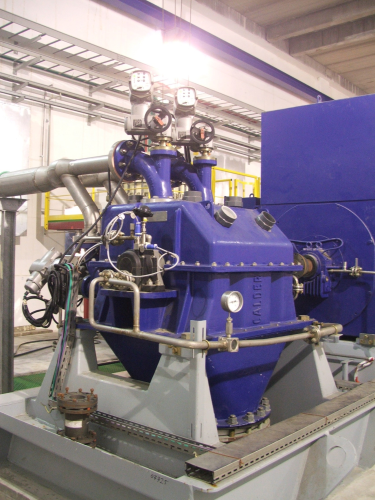
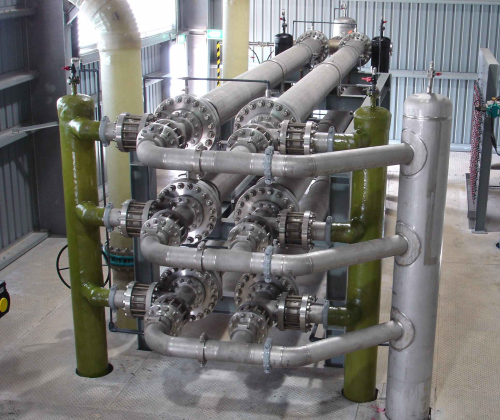
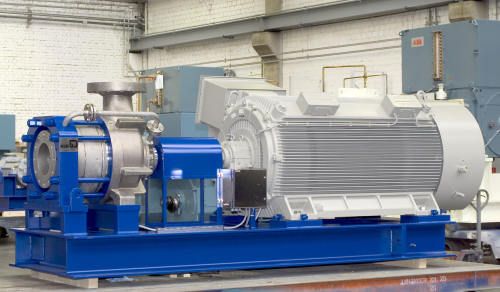
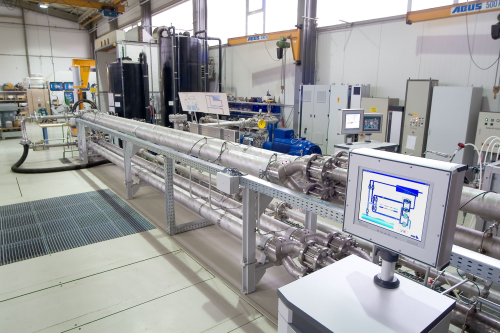
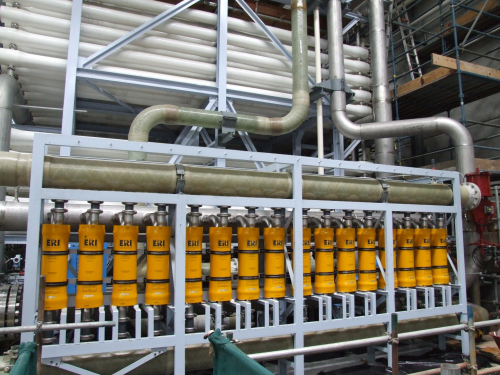
Attracting presenters, delegates and exhibitors from all parts of the world, the Conference illustrated the significant rises in research and technology developments that are being made. The depth and breadth of subjects presented and discussed by academics, equipment manufacturers, environmentalists and plant operators was a clear demonstration that desalination is central to providing the world with clean and safe water resources.
The key issues that the Conference addressed included the environmental impact of desalination plants and in particular the issues of brine treatment and disposal, and energy costs and the technologies that can help to improve plant efficiency. For observers from outside the industry, especially those detractors who point out that desalination is an expensive and polluting way of producing potable water, here was clear evidence to demonstrate that every effort is being made to minimise its impact on the environment and to reduce the price per litre of water produced.
Certainly there are issues involved in the disposal of the waste products of desalination, but there are now many research institutions and private companies investigating methods of disposing or recycling brine concentrate in an environmentally acceptable way. Designers, equipment manufacturers and plant operators are also making every effort to control and reduce the costs involved in water production either by harnessing alternative sources of power or by developing mechanical technologies that are more energy efficient. Energy consumption in SWRO was one particular subject which was raised in several sessions over the three days of the Conference. Given the level of interest that energy recovery exercised in terms of presentations and discussions at the Conference, it is a subject worthy of further examination.
Seawater desalination has increased considerably in recent years as improved membranes and more efficient pumps have contributed to bringing down operating costs to a level where they are comparable to thermal desalination processes. A further major contributing factor to bringing down operating costs has been the development of energy recovery devices (ERD), of which there are several types. With the growth in SWRO it has become inevitable that the level of competition between the manufacturers of ERDs has become more intense and arguments as to which technology produces the best results more heated.
Manufacturers of energy recovery systems with a presence at the EDS Conference were KSB, ERI, Calder and FEDCO all of whom are competing in this fast growing sector of the desalination industry. Although having been a supplier of high pressure pumps to the desalination industry for many years KSB is the most recent entrant to the ERD group with its development of the SalTec ERD. Rather than exhibiting at the Conference or presenting a paper, KSB offered delegates – including the competition – the opportunity to see the SalTec system in operation at its main manufacturing plant Frankenthal and to interrogate the system’s designers. Quite a bold move to take, but given that a number of SalTec systems are now up and running at several SWRO plants in countries bordering the Mediterranean, it is not surprising that this company is eager to demonstrate its technology.
ERDs first came onto the scene almost 30 years ago in the form of Francis turbines, shortly to be followed by Pelton turbines or turbochargers. The staying power of the Pelton turbine cannot be underestimated as there are several thousand units still giving sterling performance around the world. According to Adrian Leumann of Calder CH, which offers both Pelton (Fig 1) energy recovery turbines (impulse type) as well as an isobaric ERD (the DWEER), there remains considerable demand for turbine technology, so it cannot be consigned to history just yet. The capital costs are very low when compared to isobaric devices of the work exchanger and pressure exchanger.
“If you are looking for the highest efficiency levels, then the isobaric device is the way to go,” comments Leumann. “However, isobaric devices such as Calder’s DWEER, KSB’s SalTec and ERI’s PX are more complicated, requiring booster pumps, frequency converters, instrumentation and control systems, so it is an overall higher capital cost than impulse ERDs such as turbines and turbochargers. But it should be remembered that all these technologies have their place in the market.”
This opinion is echoed by Rick Stover of ERI Inc., who stated in his presentation ‘Retrofits to improve desalination plants’ that: “…each energy recovery technology comes with its own unique advantages and disadvantages, which should be compared and studied for each individual system.” Unlike KSB and Calder, which are both firmly rooted in the pump industry, ERI Inc. is wholly focused on its isobaric pressure exchanger technology, which does require plant designers and operators to include high pressure pumps as part of the system.
ERD technologies
Of all the ERDs, it is the energy recovery turbine or hydraulic turbocharger that is the most simple and low cost of technology. Energy recovery turbines take the hydraulic energy of the high pressure brine stream from the RO process to drive a rotor, which in turn produces rotating power to assist the electric motor driving the high pressure pump. In a hydraulic turbocharger the pump impeller is mounted on the same shaft as the turbine and boosts the pre-pressurised feed up to the membrane pressure by roughly doubling the pressure value of the HP pump discharge stream. With both devices it becomes possible for the plant operator to use a smaller and less expensive motor, thereby saving a considerable proportion of the power and cost required to drive the high pressure pump.
Calder is not the only company to offer this technology. Pump Engineering has a hydraulic device designed to transfer pressure energy from one liquid stream to a second liquid stream within an RO or one of many other processes. Each Turbo consists of a pump section and a turbine section, both of which contain a single stage impeller or rotor. As liquid from the system's reject stream flows into the turbine section of the Turbo, the turbine rotor extracts the hydraulic energy and converts it to mechanical energy. The pump impeller then converts the mechanical energy produced by the turbine rotor back to pressure energy in the feed stream. Thus the PEI Turbo is entirely energized by the reject stream.
Calder, now a Flowserve company, also provides an alternative technology based on isobaric principles this being its DWEER (Dual Work Exchanger Energy Recovery) system. The DWEER (Fig.2) takes the high pressure brine from the membranes and directs it to a work exchanger vessel fitted with seawater and pressurises the seawater to the brine pressure. A small recirculating brine pump boosts the pressure of the seawater leaving the work exchanger vessel to equal the high pressure pump pressure and then joins the flow from the high pressure pump. Nearing the end of this half-cycle, a valve diverts the high pressure brine to the opposite work exchanger vessel. The low pressure seawater then fills the spent work exchanger vessel displacing the brine to discharge and the cycle recommences.
Calder says that the DWEER maximises high pressure pump efficiencies and provides an extraordinary degree of redundancy, providing a highly cost-advantageous way to design SWRO plants. The high pressure pump is no longer connected to the ERD, so allowing the plant designer to use fewer but larger and more efficient pumps. Recovery is independent of the high pressure pump flowrate so there is no critical best efficiency point.
Mention SWRO and MSF process and the name KSB automatically comes to mind as for many years it has been supplying the desalination industry with tubular case seawater intake pumps and its HGMRO (Fig.3) high pressure pumps. A move into mainstream energy recovery was a natural progression for this company and over the past five years it has dedicated significant resources into developing its SalTec DT pressure exchanger and getting it accepted in the market. Operating in combination with the HGM RO high pressure pump the SalTec DT system provides a nominal capacity of 250m³/h, giving it the capability to operate in plants with train sizes ranging between 4,400m³/d and 5,000m³/d of permeate at common recovery rates.
KSB’s hydraulic pressure energy recovery system combines high pressure pumps with work exchangers which transfer the brine’s pressure energy directly to the incoming seawater. This eliminates the losses caused by converting hydraulic energy into mechanical energy inherent in the turbocharger and turbine. At the heart of the SalTec DT (Fig.4) system is a pressure exchanger with electronically controlled rotating valve together with the HGM-RO high pressure pump and volute casing RPH-RO booster pump. The control unit automatically adjusts the system to varying conditions resulting from scaling or fouling of the membranes. On the brine side a rotating valve driven by a servo-motor provides the cyclical pressure change in the pressure vessels, whereas the feedwater side is equipped with a check valve unit.
The rotating valve is the prime component comprising a rotating cylinder with integrated flow channels. The cylinder rotates in the stator and supplies the pressure vessels with high pressure brine or releases high pressure brine alternately depending on the position of the flow channels in the stator. Increasing the volume of the stator brings with it a low flow resistance in the rotating valve, which means that low pressure losses – the basis for excellent efficiency – can be achieved despite increased flow rates.
In the pressure vessels a separating mechanism using pistons keeps the seawater and brine apart and ensures negligible mixing (considerable <1%/close to 0%) and, therefore, a constant salt concentration upstream of the membrane, as well as a consistently high recovery rate. Piston rings ensure sealing between the pistons and the pressure vessels, thereby preventing leakage (mixing) above the pistons. The position and speed of the pistons is determined by simple sensors and constitute the input signals of the relevant control unit. The control unit can be configured to control the pressure exchanger alone, or the entire system including the variable speed recirculation pump and the HGM-RO pump thus ensuring optimum operating conditions
A purpose-designed control system minimises energy consumption and ensures the smooth interaction of all components. Furthermore, it gently accelerates and decelerates the water column in the work exchanger vessels to remove pulsation during the opening and closing of the rotating valve, and ensures almost silent running without the use of any noise protection.
Noise is an issue that attracts attention, and both KSB and Calder point to the quieter operation of their systems over the ERI PX Exchanger. Used extensively throughout the world, this rotary-type ERD recovers energy from the waste stream of SWRO systems and is claimed by its manufacturer to operate at up to 98% efficiency. Popular with many plant designers and operators, it does require a more complex infrastructure and this has to be taken into account when considering lifecycle costs; and it is rather noisy.
The ERI PX (Figure 5) energy recovery device uses the principle of positive displacement and isobaric chambers to achieve extremely efficient transfer of energy from a high-pressure waste stream, such as the brine stream from a reverse osmosis desalination unit, to a low-pressure incoming feed stream. Because the PX is highly efficient no energy is lost in the transfer. The PX device contains a cylindrical rotor with long narrow ducts. The rotor spins inside a sleeve between two end covers with port openings for both streams. Pressure energy is transferred directly from the high-pressure concentrate/reject stream to the low-pressure feed/seawater stream. The self-adjusting speed of the rotor keeps the interface between the streams within the rotor and limits mixing. The low-pressure side of the rotor fills with seawater while the high-pressure side discharges seawater.
Which system?
Andrew Kuns of FEDCO says that selecting the most appropriate ERD can be eased by an economic analysis tool developed by the US Hydraulic Institute and Europump and used in the pump market. The ‘Life Cycle Cost Analysis’ for pumping systems in his opinion provides an excellent methodology in evaluating and selecting high pressure pumps and ERDs. “Simply put,” writes Kuns,”the LCCA ranks equipment options in their ability to reduce the cost of permeate over the life of the system. In particular, application of the LCC analysis to ERD selection reveals that the best ERD is often the one with good but not necessarily the highest efficiency.”
With his paper entitled: ’The impact of LCCA – Bringing rationality to ERD selection’ Andrew Kuns demonstrated his enthusiasm for this tool, presenting several LCC analyses covering ERD selection in both medium and large-scale seawater RO systems. For the purposes of these analyses, the examples compared three installations over a 10-year period where there was no ERD, an Isobaric Chamber ERD and a Turbooster ERD. As the majority of SWRO plants are now designed to operate for a minimum of 25 years, the period examined does appear to be rather short. As an impartial observer, it was interesting to see how these analyses were received by delegates, some of whom felt obliged to openly question the results and conclusions drawn by the presenters.
Regardless of the findings made by FEDCOs’ Andrew Kluns, the availability of a well researched and designed analysis will provide assistance to those engineers and consultants whose job it is to decide on which technology or mix of technologies to select. The simple fact is that there are no shortages of opportunities for each type of ERD and the debate between providers as to which is the best will continue unabated.
Contact: Bryan Orchard
Orchard@primex.co.uk





